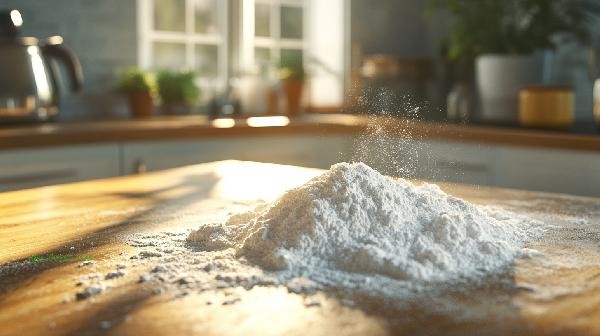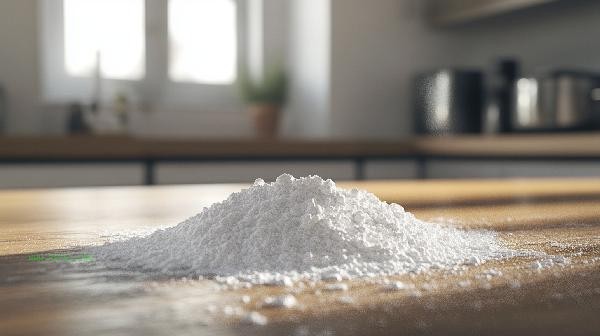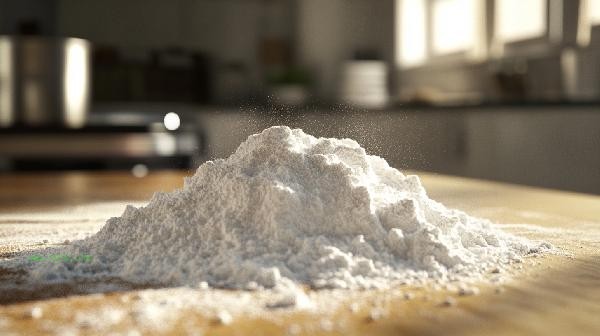Soda powder added to flour mainly plays a role in leavening, neutralizing acidity, and improving taste. Soda powder is an alkaline substance that reacts with acidic components to produce carbon dioxide gas, causing the dough to expand. It is commonly used to make baked goods such as cookies and cakes.

1. Loosening Effect
Soda powder decomposes when heated or exposed to acid, producing carbon dioxide gas. These gases form tiny bubbles in the dough, increasing the volume and softening the texture of baked goods. This leavening effect is particularly suitable for fast baked goods that do not require prolonged fermentation, such as scones, pancakes, etc. The speed and amount of gas release directly affect the fluffiness of the finished product, so the amount of baking soda needs to be controlled.
2. Neutralizing acidity
If flour contains acidic components such as yogurt, lemon juice, or honey, baking soda can effectively neutralize its acidity and avoid the finished product being too acidic. The acid-base reaction not only regulates the taste, but also promotes gas production and enhances the leavening effect. For example, when making chocolate cake, the acidity of cocoa powder often needs to be neutralized by baking soda, while enhancing the color and flavor of the cake.
3. Improving Color
The alkaline environment of baking soda can promote the Maillard reaction, forming a tempting golden or brown color on the surface of baked goods. For example, adding baking soda to gingerbread or some cookies makes them easier to color and have a uniform color when baked. However, excessive use may cause the finished product to taste bitter or alkaline.

4. Adjusting Texture
Soda powder can change the gluten structure, making the finished product more crispy or crunchy. For high-fat formula cookies or puff pastry, moderate baking soda can reduce gluten formation and avoid a hard texture. However, it should be noted that baking soda needs to be used in conjunction with acidic components, while baking soda already contains acidic salts.
5. Assisted Fermentation
Soda powder can be used as a chemical fermentation agent instead of biological fermentation in yeast free or fast cooking recipes. Especially suitable for ingredients that are not resistant to long-term fermentation, such as banana bread or whole wheat food. But its fermentation effect is completed in one go, and it needs to be baked in a timely manner to prevent gas from escaping.

When using baking soda, the dosage should be strictly controlled according to the formula. Excessive use can cause the finished product to become bitter or produce a metallic taste. It is recommended to mix baking soda and flour evenly in advance to avoid excessive concentration in certain areas. When storing, it should be sealed and moisture-proof to prevent failure. For people with excessive stomach acid or who require a low sodium diet, the dosage can be reduced or they can choose non aluminum foam powder as a substitute. Acidic ingredients such as lemon juice can also be paired with baking to optimize the reaction effect.








Comments (0)
Leave a Comment
No comments yet
Be the first to share your thoughts!